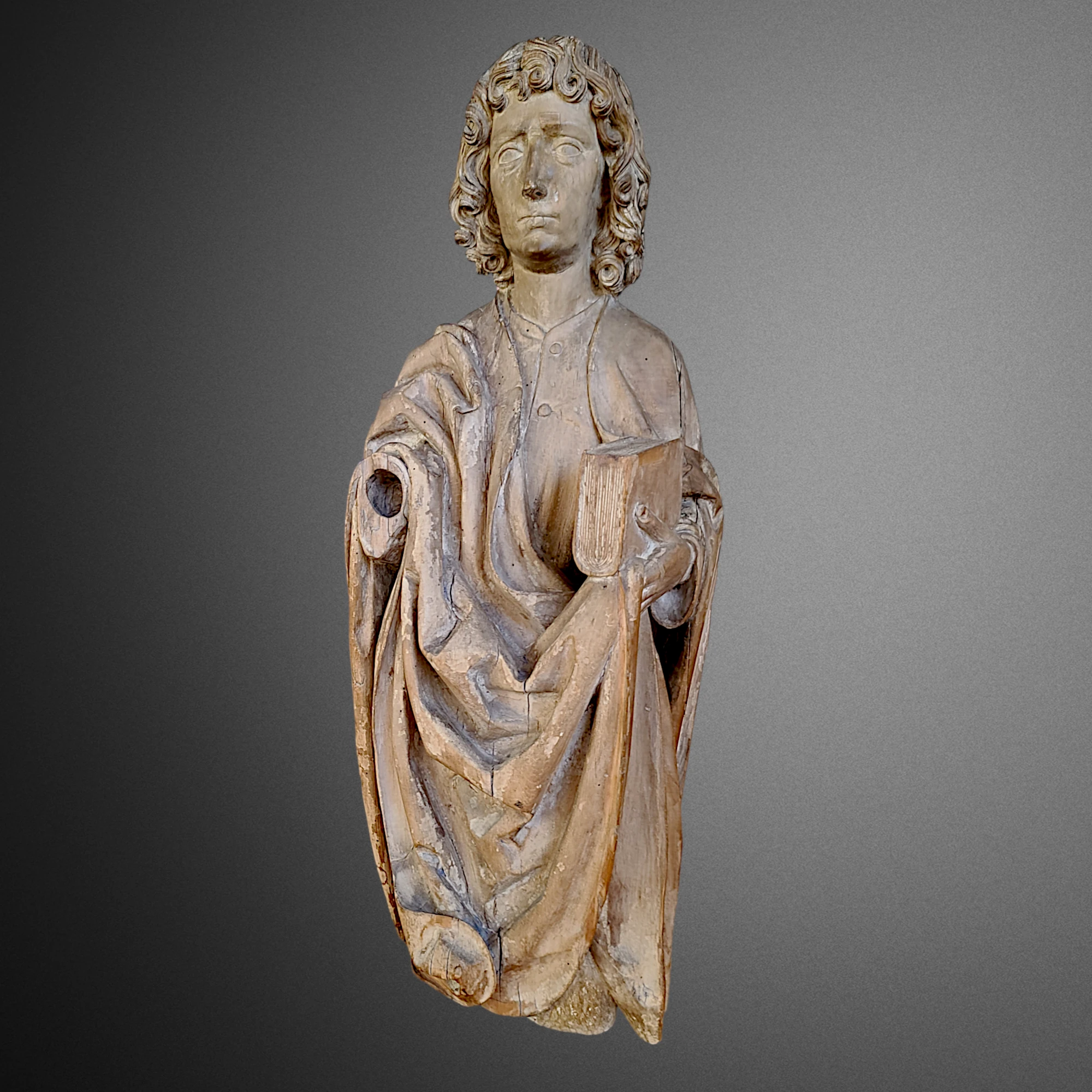Back to the artwork ref.253
Switch to full screen mode
Exit full screen mode

Origin: Ulm, Germany.
Medium: Limewood.
Size: H: 79 cm.
Period: 15th century.
Condition: Visible losses on the right hand.
Price: 9 500€
Ref.253
This Gothic sculpture depicts Saint John the Evangelist. It is distinguished by the finesse of its details, particularly in the treatment of the ample and fluid drapery, as well as in the wavy and curly hair of the saint, characteristic of the late Gothic style. Saint John is depicted holding a book, symbolizing his Gospel. His face, with delicate and meditative features, slightly idealized, reflects profound spirituality. This work, attributed to the Master of the Acker Altar (Meister des Acker-Altars), was exhibited at the Ulm Museum and bears an inventory number on its back corresponding to its loan. The sculpture displays the distinctive characteristics of this Master's chisel, including finely hollowed-out hair and a serene face, contrasting with the austerity of works by his contemporaries, Veit Stoss and Tilman Riemenschneider.
The Meister des Acker-Altars, active in Ulm between 1490 and 1520, is now identified by art historians (Gertrud Otto, Lore Göbel, and Heribert Meurer) as also being the Master of the Ulm Vespertolium (Meister des Ulmer Vespertoliums).
A single artist, therefore, for a limited but homogeneous corpus. This master has left us a few representations of the Virgin and Child and saints.
Among his notable works, one can cite:
- Saint George, attributed to the Meister des Ulmer Acker-Altars and preserved at the Würth Johanniterkirche Museum in Schwäbisch Hall, Germany (Inv.-Nr. 14809).
- The sculptures of the Vespertolium in the Ulm Cathedral, now housed in the city museum, showing striking similarities in hair treatment with our sculpture.
Finally, during our study, we identified a representation of Saint George, housed in the Château de Chillon Museum in Switzerland, which, for the first time, can be uniquely and formally linked to this corpus.
By its design, our sculpture was undoubtedly part of a set, similar to the sculptures of the Vespertolium in the Ulm Cathedral. Traces of polychromy are still visible.
Provenance: Former collection from Ulm.
References consulted: "Der spätmittelalterliche Dreisitz des Ulmer Münsters und die Skulpturen des Vespertoliumsmeisters", Eva Leistenschneider & Evamaria Popp, 2017 - "Der Meister des Ulmer Vespertoliums und sein Werk", Albrecht Miller & Manuel Teget-Welz, 2011.